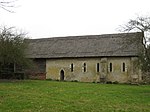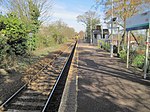Sudbury transmitting station

The Sudbury transmitting station is a facility for telecommunications and broadcasting transmission at Sudbury, England. It consists of two guyed masts, one, the original, being 165.8 metres (544 ft) high, and a second mast (no longer in service) at 103 metres (338 ft). They have antennas attached at various heights. It is situated 14 miles WSW of Ipswich at a site height of 70m. All 6 Digital TV MUXES are transmitted from Sudbury using an omnidirectional pattern at an ERP of 100 kW. Originally Sudbury was a B group transmitter but in order to accommodate the digital transmissions it went E group then, at its 700MHz clearance in August 2018, it ended up a K group (or wideband). However, most B group, E group and wideband aerials will continue to work fine on it (see graph). It broadcast television and radio services to central and southern Suffolk and most of Essex, however southern areas of the county received a better TV signal from the Crystal Palace TV transmitter. This includes cities and towns such as Ipswich, Chelmsford, Colchester, Southend, Clacton-on-Sea and Haverhill. Signals can also be received as far as north Kent.
Excerpt from the Wikipedia article Sudbury transmitting station (License: CC BY-SA 3.0, Authors, Images).Sudbury transmitting station
Upper Road, Babergh Little Cornard
Geographical coordinates (GPS) Address External links Nearby Places Show on map
Geographical coordinates (GPS)
| Latitude | Longitude |
|---|---|
| N 52.004167 ° | E 0.785833 ° |
Address
Sudbury A
Upper Road
CO10 0NZ Babergh, Little Cornard
England, United Kingdom
Open on Google Maps








